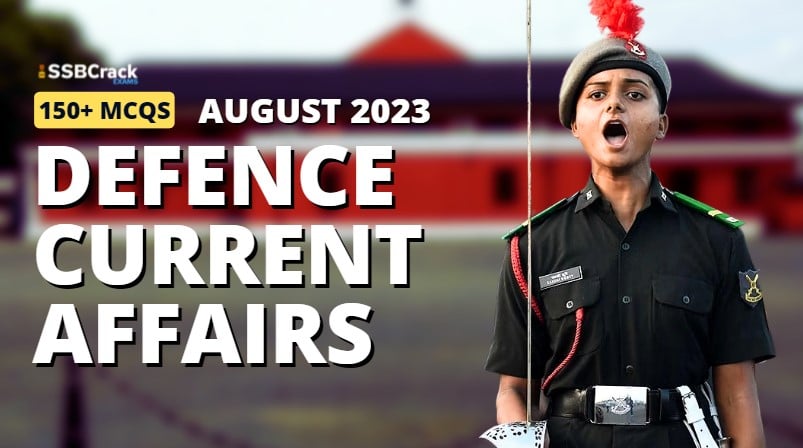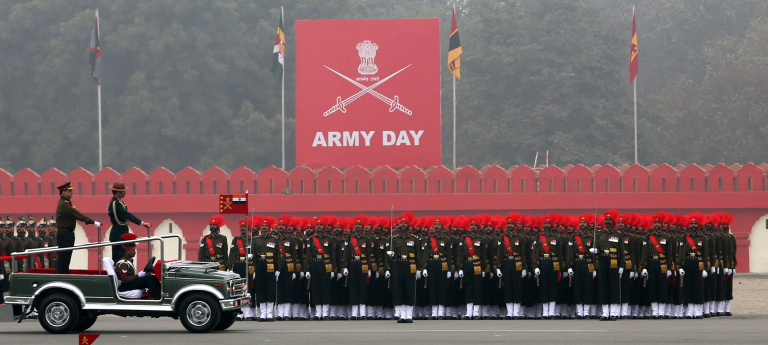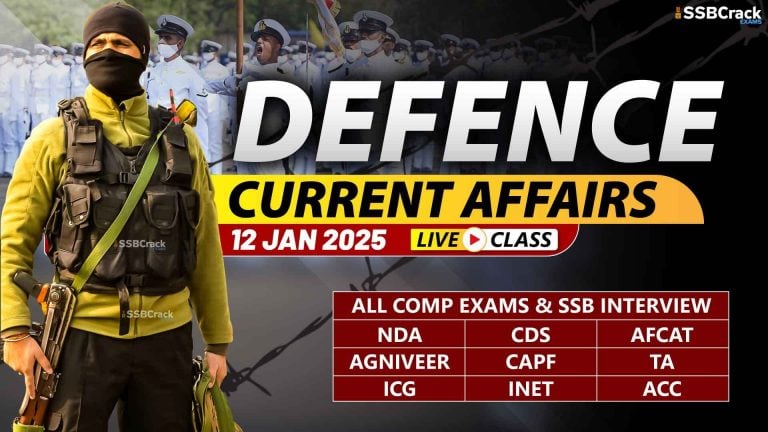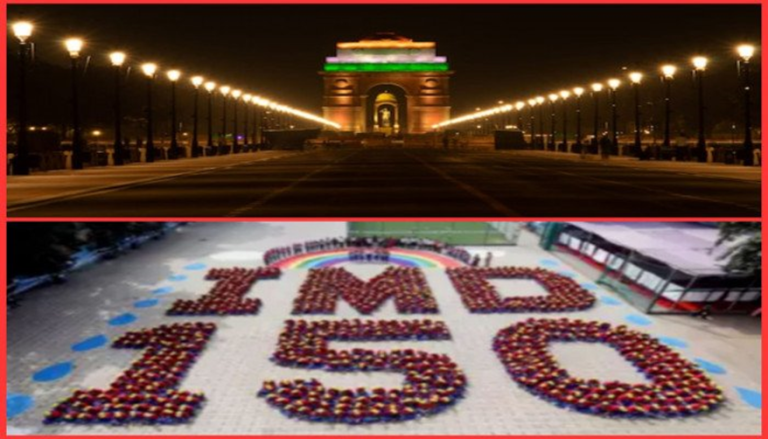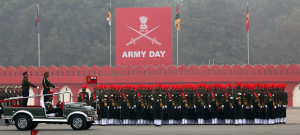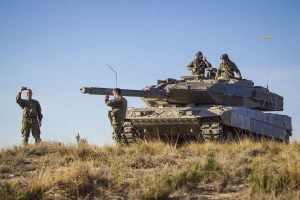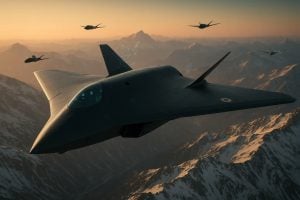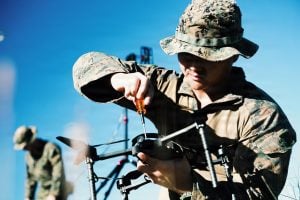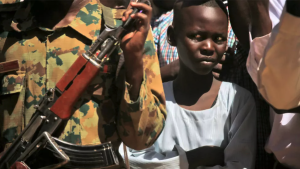Defence Current Affairs MCQs: Welcome to our compilation of Defence Current Affairs Multiple-Choice Questions for August 2023. These MCQs are indispensable for those aiming to succeed in competitive examinations such as NDA, CDS, AFCAT, and SSB Interviews. Moreover, these questions serve as a valuable resource for other Indian competitive exams including UPSC, Banking, Railways, and SSC. This collection is designed to assess your grasp on the most recent developments in national and global defense arenas, thereby enhancing your readiness for your forthcoming examinations. Dive in to evaluate your preparedness and stay ahead in your quest for success.
Defence Current Affairs MCQs August 2023
1. What is the INS Visakhapatnam’s primary role as a Visakhapatnam-class stealth guided-missile destroyer?
A. Anti-submarine warfare
B. Anti-aircraft warfare
C. Amphibious assault
D. Mine countermeasures
Answer: B. Anti-aircraft warfare
Explanation: The INS Visakhapatnam, as a Visakhapatnam-class destroyer, is primarily designed for anti-aircraft warfare, making it capable of defending against aerial threats.
2. Which Indian city is the INS Visakhapatnam named after?
A. New Delhi
B. Mumbai
C. Visakhapatnam
D. Chennai
Answer: C. Visakhapatnam
Explanation: The INS Visakhapatnam derives its name from the historic city of Visakhapatnam, located on the east coast of Andhra Pradesh, often referred to as the ‘City of Destiny.’
3. What is the maximum speed that the INS Visakhapatnam can achieve?
A. 20 knots
B. 25 knots
C. 30 knots
D. 35 knots
Answer: C. 30 knots
Explanation: The INS Visakhapatnam is capable of achieving speeds in excess of 30 knots, making it a fast and agile naval vessel.
4. How is the reduced Radar Cross Section (RCS) of the INS Visakhapatnam achieved?
A. Through advanced radar technology
B. Through its size and bulkiness
C. Through efficient shaping of the hull and other design features
D. Through a specially designed paint coating
Answer: C. Through efficient shaping of the hull and other design features
Explanation: The INS Visakhapatnam achieves its reduced Radar Cross Section (RCS) through the efficient shaping of the hull, a full beam superstructure design, plated masts, and the use of radar-transparent materials on exposed decks.
5. What is the complement of personnel aboard the INS Visakhapatnam?
A. Approximately 200 personnel
B. Approximately 250 personnel
C. Approximately 315 personnel
D. Approximately 400 personnel
Answer: C. Approximately 315 personnel
Explanation: The INS Visakhapatnam has a total complement of about 315 personnel who serve aboard the vessel.
6. What is the primary objective of the Yudh Abhyas joint military exercise between India and the USA?
A. Counterterrorism operations
B. Promote cooperation and training between the two armies
C. Cybersecurity drills
D. Naval warfare exercises
Answer: B. Promote cooperation and training between the two armies
Explanation: The primary goal of the Yudh Abhyas exercise is to foster cooperation and training between the Indian and US armies through joint exercises, cultural exchanges, and building joint operating skills.
7. When did the Yudh Abhyas joint military exercise between India and the USA commence?
A. 2000
B. 2004
C. 2010
D. 2015
Answer: B. 2004
Explanation: Yudh Abhyas has been conducted annually since 2004, making it an ongoing joint exercise between the two countries.
8. Which chapter of the UN Mandate does Yudh Abhyas 2023 focus on for the deployment of an integrated battle group?
A. Chapter I
B. Chapter V
C. Chapter VII
D. Chapter IX
Answer: C. Chapter VII
Explanation: Yudh Abhyas 2023 concentrates on the employment of an integrated battle group under Chapter VII of the UN Mandate, which encompasses peacekeeping and peace enforcement operations.
9. What aspect of military operations is emphasized during Yudh Abhyas joint exercises?
A. Amphibious warfare
B. Humanitarian Assistance and Disaster Relief (HADR) operations
C. Cyber warfare
D. Guerrilla tactics
Answer: B. Humanitarian Assistance and Disaster Relief (HADR) operations
Explanation: Yudh Abhyas exercises place a significant focus on Humanitarian Assistance and Disaster Relief (HADR) operations, involving swift and coordinated relief efforts following natural disasters.
10. In what type of conditions will the coalition-integrated battle group be deployed during Yudh Abhyas exercises?
A. Desert conditions
B. Mountainous and extreme climatic conditions
C. Urban warfare scenarios
D. Tropical rainforest environments
Answer: B. Mountainous and extreme climatic conditions
Explanation: The Yudh Abhyas exercises will see the deployment of the coalition-integrated battle group in challenging mountainous and extreme climatic conditions, where they will demonstrate their operational capabilities.
11. Who is the developer of the Spike Non Line of Sight (NLOS) Anti-tank Guided Missile (ATGM)?
A. Rafael Advanced Defense Systems
B. Lockheed Martin
C. BAE Systems
D. Northrop Grumman
Answer: A. Rafael Advanced Defense Systems
Explanation: The Spike NLOS ATGM is developed by Rafael Advanced Defense Systems, an Israeli defense technology company.
12. In how many variants is the Spike NLOS missile available?
A. One variant
B. Two variants
C. Three variants
D. Four variants
Answer: C. Three variants
Explanation: The Spike NLOS missile is available in three variants: man-portable, vehicle-launched, and helicopter-launched.
13. Which countries use Spike missiles in their defense forces?
A. Israel and the United States
B. India and China
C. Netherlands, Germany, and Italy
D. Russia and Japan
Answer: C. Netherlands, Germany, and Italy
Explanation: Spike missiles are used by the defense forces of Israel and 38 other countries, including Netherlands, Germany, Italy, and several others.
14. What is the maximum range of the Spike NLOS missile?
A. 10 kilometers
B. 20 kilometers
C. 30 kilometers
D. 40 kilometers
Answer: C. 30 kilometers – Explanation: The Spike NLOS missile can hit targets from distances of up to 30 kilometers.
15. What type of seeker does the Spike NLOS missile use for guidance?
A. Radar seeker
B. Infrared seeker
C. Electro-optical seeker
D. Sonar seeker
Answer: C. Electro-optical seeker
Explanation: The Spike NLOS missile employs an electro-optical seeker, which allows the launch operator to clearly see targets and provides greater flexibility in target selection and control during flight.
16. When is the bilateral exercise ‘Zayed Talwar’ scheduled to take place between the Indian Navy and the United Arab Emirates?
A. 8th to 11th August 2023
B. 1st to 4th September 2023
C. 15th to 18th July 2023
D. 10th to 13th November 2023
Answer: A. 8th to 11th August 2023
Explanation: The ‘Zayed Talwar’ exercise is set to be conducted from 8th to 11th August 2023.
17. Which two Indian Navy ships are participating in the ‘Zayed Talwar’ exercise?
A. INS Kolkata and INS Mumbai
B. INS Visakhapatnam and INS Trikand
C. INS Vikramaditya and INS Chakra
D. INS Sindhurakshak and INS Shishumar
Answer: B. INS Visakhapatnam and INS Trikand
Explanation: The participating Indian Navy ships in the ‘Zayed Talwar’ exercise are INS Visakhapatnam and INS Trikand.
18. What is the primary objective of the professional interactions between the Indian Navy and the UAE Naval Force during the exercise?
A. Cultural exchange
B. Enhancing cooperation in counter-terrorism
C. Sharing best practices in maritime operations
D. Space exploration collaboration
Answer: C. Sharing best practices in maritime operations
Explanation: The primary objective of the professional interactions is to share best practices in maritime operations between the Indian Navy and the UAE Naval Force.
19. How does the ‘Zayed Talwar’ exercise contribute to the participating navies’ relationship?
A. It strengthens economic ties.
B. It promotes cultural exchange.
C. It enhances maritime partnership and cooperation.
D. It focuses on space exploration.
Answer: C. It enhances maritime partnership and cooperation.
Explanation: The exercise aims to boost maritime partnership and cooperation between the Indian Navy and the UAE Naval Force.
20. Which ship is the lead and the first of the Indian Navy’s Visakhapatnam-class stealth guided-missile destroyers?
A. INS Kolkata
B. INS Trikand
C. INS Vikramaditya
D. INS Visakhapatnam
Answer: D. INS Visakhapatnam
Explanation: INS Visakhapatnam is the lead ship and the first of the Indian Navy’s Visakhapatnam-class stealth guided-missile destroyers.
21. What is the name of the joint military exercise scheduled to be held between China and the United Arab Emirates (UAE) in 2023?
A. Desert Storm
B. Falcon Shield 2023
C. Dragon Fury
D. Sand Mirage
Answer: B. Falcon Shield 2023
Explanation: The joint military exercise between China and the UAE is named “Falcon Shield 2023.”
22. Where is the Falcon Shield 2023 exercise scheduled to take place?
A. Dubai, UAE
B. Beijing, China
C. Xinjiang Uygur autonomous region, China
D. Abu Dhabi, UAE
Answer: C. Xinjiang Uygur autonomous region, China
Explanation: Falcon Shield 2023 is set to be held in China’s Xinjiang Uygur autonomous region.
23. What is the primary aim of the Falcon Shield 2023 exercise between China and the UAE?
A. Promoting tourism
B. Strengthening defense and security cooperation
C. Environmental conservation
D. Space exploration
Answer: B. Strengthening defense and security cooperation
Explanation: The main objective of the Falcon Shield 2023 exercise is to strengthen defense and security cooperation between China and the UAE through joint military drills and exercises.
24. What is the name of the naval exercises recently announced by the Russian Defense Ministry?
A. Ocean Guardian 2023
B. Ocean Shield 2023
C. Sea Sentinel 2023
D. Maritime Defender 2023
Answer: B. Ocean Shield 2023
Explanation: The Russian Defense Ministry has announced the start of the Ocean Shield 2023 naval exercises in the Baltic Sea.
25. How many military personnel are estimated to participate in the Ocean Shield 2023 naval exercises?
A. 3,000
B. 4,500
C. 6,000
D. 8,000
Answer: C. 6,000
Explanation: Approximately 6,000 military personnel are expected to participate in the Ocean Shield 2023 naval exercises.
26. What is the primary purpose of the naval drills in Ocean Shield 2023?
A. To conduct environmental conservation efforts
B. To assess the readiness of the Russian Navy to defend national interests
C. To promote tourism in the Baltic Sea
D. To explore space-related technologies
Answer: B. To assess the readiness of the Russian Navy to defend national interests
Explanation: The main purpose of the Ocean Shield 2023 naval exercises is to assess the readiness of the Russian Navy to defend the country’s interests in a critical area and coordinate various military forces for maritime defense.
27. What is the name of the anti-missile defense system that Israel has received approval to sell to Finland?
A. Iron Dome
B. Arrow II
C. David’s Sling
D. Patriot
Answer: C. David’s Sling
Explanation: Israel has received approval to sell its “David’s Sling” anti-missile defense system to Finland.
28. What is the approximate value of the procurement agreement between Israel and Finland for the David’s Sling defense system?
A. 100 million Euros
B. 200 million Euros
C. 316 million Euros
D. 500 million Euros
Answer: C. 316 million Euros
Explanation: The procurement agreement for the David’s Sling defense system between Israel and Finland is worth approximately 316 million Euros. This agreement represents a significant milestone in defense cooperation between the two countries.
29. Who is set to launch the Vindhyagiri, a Project 17A frigate, on August 17, 2023?
A. Prime Minister Narendra Modi
B. Indian Navy Chief Admiral Karambir Singh
C. President Droupadi Murmu
D. Defense Minister Rajnath Singh
Answer: C. President Droupadi Murmu
Explanation: President Droupadi Murmu is scheduled to launch the Vindhyagiri frigate on August 17, 2023.
30. What is the significance of the name “Vindhyagiri” for the frigate?
A. It is named after a river in West Bengal.
B. It is named after a mountain range in Karnataka.
C. It is named after a famous Indian naval commander.
D. It is named after an ancient Indian warship.
Answer: B. It is named after a mountain range in Karnataka.
Explanation: The frigate is named “Vindhyagiri” after a mountain range in Karnataka.
31. How many ships are part of the Project 17A frigate program?
A. Four
B. Five
C. Six
D. Seven
Answer: C. Six
Explanation: The Project 17A frigate program involves the construction of six ships.
32. What key features are associated with the Project 17A frigates?
A. Advanced sensors and weaponry
B. Nuclear propulsion
C. Amphibious capabilities
D. Ballistic missile defense
Answer: A. Advanced sensors and weaponry
Explanation: The Project 17A frigates are equipped with advanced features, including enhanced sensors and weaponry.
33. Where is the Vindhyagiri frigate being launched from?
A. Mazagon Dock Shipbuilders Limited (MDL)
B. Garden Reach Shipbuilders and Engineers Limited (GRSE)
C. Hindustan Shipyard Limited (HSL)
D. Cochin Shipyard Limited (CSL)
Answer: B. Garden Reach Shipbuilders and Engineers Limited (GRSE)
Explanation: The Vindhyagiri frigate is set to be launched from the Garden Reach Shipbuilders and Engineers Limited (GRSE) in Kolkata.
34. What type of guns were used for the ceremonial gun salute during the 77th Independence Day celebrations at Delhi’s Red Fort?
A. British 25-pounder guns
B. 105-mm Light Field Guns
C. 21-mm Light Field Guns
D. American M1 Abrams tanks
Answer: B. 105-mm Light Field Guns
Explanation: Indigenous 105-mm Light Field Guns were used for the ceremonial gun salute, replacing the British 25-pounder guns.
35. When did the indigenous 105-mm Light Field Guns make their debut with a 21-gun salute?
A. During the Independence Day celebrations
B. During the Republic Day parade
C. During Diwali festivities
D. During Holi celebrations
Answer: B. During the Republic Day parade
Explanation: The indigenous 105-mm Light Field Guns made their debut with a 21-gun salute during the Republic Day parade.
36. Who received a Guard of Honour from the Armed Forces and Delhi Police at the Red Fort during the Independence Day celebrations?
A. President Ram Nath Kovind
B. Prime Minister Narendra Modi
C. Defense Minister Rajnath Singh
D. Chief Justice of India
Answer: B. Prime Minister Narendra Modi
Explanation: Prime Minister Narendra Modi received a Guard of Honour from the Armed Forces and Delhi Police at the Red Fort during the Independence Day celebrations.
37. What was the theme for the year during the Independence Day celebrations?
A. Freedom and Unity
B. Nation First, Always First
C. Azadi Ka Amrit Mahotsav
D. India’s Progress and Prosperity
Answer: B. Nation First, Always First
Explanation: The theme for the year during the Independence Day celebrations was ‘Nation First, Always First,’ aligned with the “Azadi Ka Amrit Mahotsav” celebration.
38. What was showered by Indian Air Force helicopters during the event?
A. Confetti
B. Flower petals
C. Candy
D. Gold coins
Answer: B. Flower petals
Explanation: Flower petals were showered by Indian Air Force helicopters as part of the celebrations at the Red Fort.
39. Why has the Indian Air Force’s multi-national exercise, Tarang Shakti, been postponed to the following year?
A. Due to budget constraints
B. To better align with the schedules of participating friendly foreign nations
C. Because of adverse weather conditions
D. To focus on domestic training exercises
Answer: B. To better align with the schedules of participating friendly foreign nations
Explanation: Tarang Shakti’s postponement was made to better coordinate with the schedules of participating foreign nations and ensure maximum participation.
40. What is the primary goal of Tarang Shakti for Indian pilots?
A. To showcase their prowess in international exercises
B. To engage in combat missions
C. To test new aircraft
D. To enhance their learning experience
Answer: D. To enhance their learning experience
Explanation: Tarang Shakti aims to provide Indian pilots with a distinctive learning experience.
